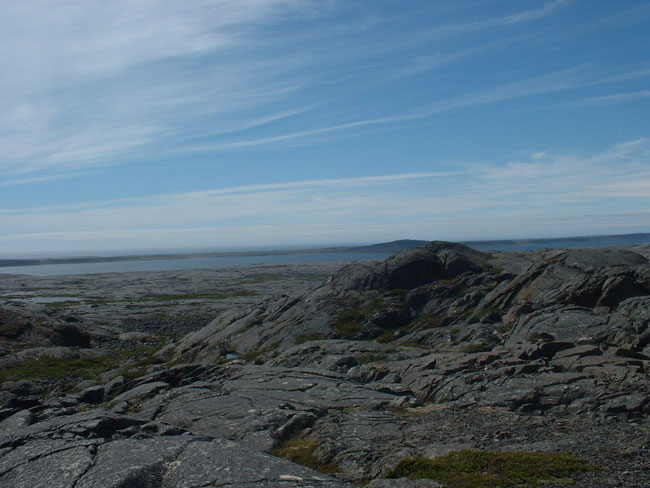Oldest Rocks on Earth Found

Scientists have found the oldest known rocks on Earth. They are 4.28 billion years old, making them 250 million years more ancient than any previously discovered rocks.
Earth formed about 4.6 billion years ago from a disk of gas and dust circling the sun. Remnants of crust from Earth's infancy are hard to come by because most of that material has been recycled into Earth's interior several times by the plate tectonics that continue to shape our planet's surface.
In 2001, geologists found an expanse of bedrock, known as the Nuvvuagittuq greenstone belt, exposed on the eastern shore of Hudson Bay in northern Quebec.
Suspecting that the rocks there could be from one of the earliest periods of Earth's history, geologists took samples to try and determine their age. They measured tiny variations in the isotopes (or species of an element that have different numbers of neutrons) of the rare earth elements neodymium and samarium in the rocks and determined that the samples were from 3.8 to 4.28 billion years old.
The oldest dates, which came from rocks that geologists call "faux amphibolite," are thought to be ancient volcanic deposits. They beat the previously oldest known rocks, which are 4.03 billion years old and come from a formation called the Acasta Gneiss in Canada's Northwest Territories.
The only dates of crustal material older than the newly-dated Nuvvuagittuq greenstone belt are from isolated mineral grains called zircons that are highly resistant to weathering and geologic processes. The oldest zircons, from grains in Western Australia, are about 4.36 billion years old.
The Nuvvuagittuq rocks are "the oldest whole rocks found so far" though, said geologist Richard Carlson of the Carnegie Institution, who analyzed the rocks with Jonathan O'Neil, a Ph.D. student at McGill University in Montreal. The team's findings are detailed in the Sept. 25 issue of the journal Science. Their work was supported by the National Science and Engineering Research Council of Canada, the U.S. National Science Foundation and the Carnegie Institution of Washington.
Get the world’s most fascinating discoveries delivered straight to your inbox.
Examining such ancient rocks "gives us an unprecedented glimpse of the processes that formed the early crust," Carlson said.
- 101 Amazing Earth Facts
- Crusty Old Discovery Reveals Early Earth's History
- What Makes Earth Special Compared to Other Planets

Andrea Thompson is an associate editor at Scientific American, where she covers sustainability, energy and the environment. Prior to that, she was a senior writer covering climate science at Climate Central and a reporter and editor at Live Science, where she primarily covered Earth science and the environment. She holds a graduate degree in science health and environmental reporting from New York University, as well as a bachelor of science and and masters of science in atmospheric chemistry from the Georgia Institute of Technology.


